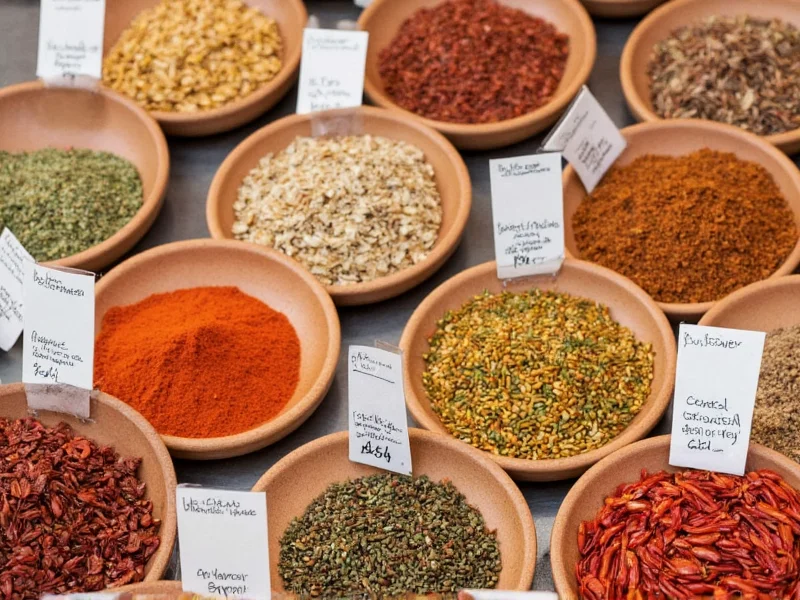Understanding Spice Expiration Labels
When examining how long are spices good for after expiration date, it's crucial to understand what those dates actually mean. Most spice manufacturers print "best by," "best before," or "use by" dates rather than true expiration dates. These indicate when the spice will be at its peak flavor and potency, not when it becomes unsafe to consume.
Unlike perishable foods that can harbor dangerous bacteria after expiration, dried spices lack the moisture content necessary for microbial growth. The primary concern with aged spices is diminished flavor rather than food safety risks. This distinction explains why many home cooks wonder are expired spices still good for cooking purposes.
Shelf Life Comparison by Spice Type
| Spice Type | Unopened Shelf Life | Opened Shelf Life | Signs of Degradation |
|---|---|---|---|
| Ground Spices | 3-4 years | 2-3 years | Faded color, weak aroma |
| Whole Spices | 4-5 years | 3-4 years | Loss of volatile oils |
| Dried Herbs | 1-3 years | 6-12 months | Brownish color, musty smell |
| Spice Blends | 2-3 years | 1-2 years | Separation of ingredients |
| Salt-Based Blends | Indefinite | Indefinite | Clumping, moisture |
Factors That Impact Spice Longevity
Several environmental factors determine how long are spices good for after expiration date. Understanding these elements helps maximize your spice collection's shelf life:
Light Exposure
Ultraviolet light breaks down the essential oils in spices most rapidly. Store spices in opaque containers or in dark cabinets away from windows. Clear glass jars may look attractive on display but significantly reduce shelf life compared to metal or dark glass containers.
Temperature Fluctuations
Heat accelerates the degradation of volatile compounds. Avoid storing spices near your stove, oven, or dishwasher where temperatures regularly fluctuate. The ideal storage temperature for spices ranges between 50-70°F (10-21°C).
Moisture Control
Humidity causes spices to clump and potentially develop mold. Always use dry utensils when handling spices, and never return unused portions to the original container. Consider adding silica gel packets to your spice storage area to absorb excess moisture.
Practical Tests for Spice Freshness
Instead of relying solely on printed dates, use these practical methods to determine how to tell if spices are expired:
The Aroma Test
Crush a small amount between your fingers and smell immediately. Fresh spices release a strong, distinctive aroma. If you must bring the spice close to your nose to detect any scent, it's likely past its prime. This test works particularly well for whole spices like cinnamon sticks or cardamom pods.
The Visual Inspection
Brightly colored spices like paprika, turmeric, and saffron noticeably fade as they age. Compare your spice against a fresh sample if possible. Dried herbs should maintain their green or vibrant color rather than appearing brownish or dull.
The Taste Test (Use Caution)
For spices you use regularly, a small taste test can reveal diminished flavor. Place a tiny amount on your tongue—expired spices taste flat and one-dimensional compared to their vibrant, complex fresh counterparts. Never taste spices that show signs of moisture, mold, or insect activity.
Optimal Storage Practices for Maximum Shelf Life
Implement these proper spice storage techniques to extend your spices' useful life well beyond printed dates:
- Airtight containers: Transfer spices from flimsy store packaging to glass or metal containers with tight-sealing lids
- Cool, dark location: Choose a cabinet away from heat sources and direct sunlight
- Buy in small quantities: Purchase whole spices in amounts you'll use within 6-12 months for peak freshness
- Grind as needed: Keep whole spices and grind them just before use for maximum flavor impact
- Label everything: Mark purchase or opening dates on containers to track freshness
When to Discard Spices Immediately
While most spices remain safe indefinitely, certain conditions require immediate disposal:
- Visible mold growth - discard the entire container immediately
- Moisture or clumping that doesn't break apart when pressed
- Unusual odors beyond simple loss of aroma (sour, musty, or chemical smells)
- Presence of insects or insect fragments
- Spice blends containing salt that have become hard and solidified
Remember that while spice shelf life after best by date is generally long, compromised spices won't enhance your cooking. Using faded spices means you'll need larger quantities to achieve the same flavor impact, potentially altering your recipe's balance.
Reviving Slightly Stale Spices
If your spices have lost some potency but show no signs of spoilage, try these revival techniques:
- Toast whole spices in a dry skillet over medium heat for 1-2 minutes until fragrant
- Store spices with a desiccant packet to absorb excess moisture
- Combine slightly stale spices with fresh ones to boost flavor
- Use stale spices in long-cooking dishes like stews where flavor has time to develop











 浙公网安备
33010002000092号
浙公网安备
33010002000092号 浙B2-20120091-4
浙B2-20120091-4